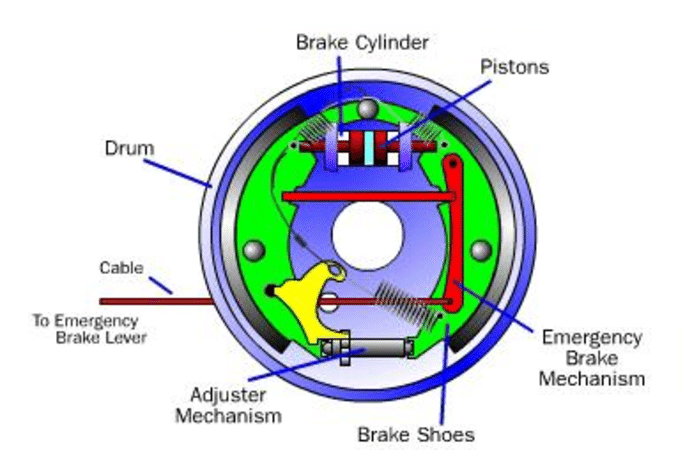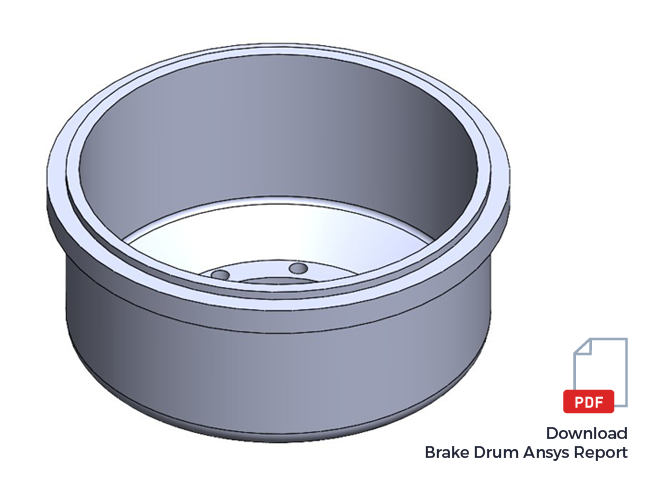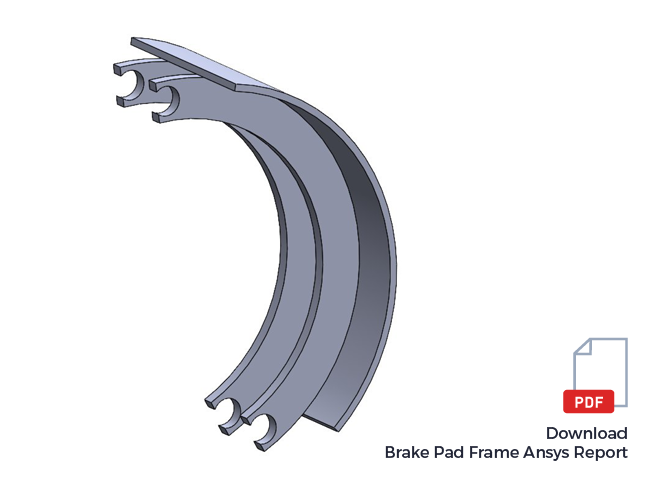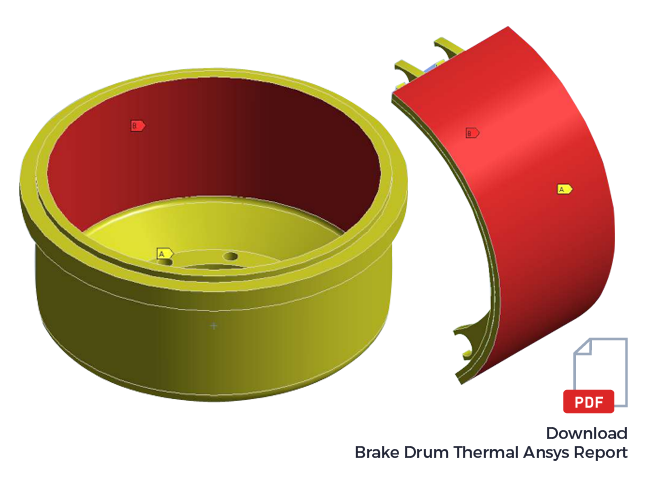 DRUM BRAKE
DRUM BRAKE
Home / Brake Drum Development and Analysis
Brake Drum Development and Analysis
The Brakes are an Energy Conversion System!
The brakes are an energy conversion system which converts the kinetic energy of a moving vehicle into thermal energy.
The systems are designed to decelerate the vehicle wheels movement through friction, thereby absorbing the kinetic energy at the wheels. The drum brakes are mainly used at the rear wheels of the passengers' cars and truck while the disc brakes are extremely used for the front brakes because of their greater directional stability. In brake drum, friction is caused by a set of shoes that presses against the inner surface of a rotating brake drum. Within the drum are shoes lined with friction material. The brake shoes moves against the inner surface of the brake drum by the action of the piston inside the wheel cylinder. The hydraulic fluid under pressure in the wheel cylinder moves the pistons which forces the brake shoes against the brake drum. The wheel cylinder and the shoes are mounted on the back plate.

The brake drum is the large critical part of the braking system that rotates around the brake shoes. When the drum is heated by hard braking, the diameter of the drum increases and the brake pedal must be further depressed to obtain an effective braking action. This is known as brake fade and it has lead to drivers panic and brake failure in extreme circumstance. This paper also aimed at tackling this problem. Fins are widely used to enhance the heat transfer from a surface. The use of the fins (extended surfaces) is a thermal management technique used to augment heat transfer by increasing the available surface area and the total heat dissipation. Fins can be found in most electronics, engines, industrial equipment, and a variety of other mechanical devices. The ability of an object to reject excess heat is a required task to ensure operability, and if not accomplished sufficiently, can result in device malfunction or even failure Therefore , the convective removal of heat from the surface of the brake drum can substantially be improved by introducing extension (fins) on its surface. This is done in this paper, by maintaining the same weight of the two models and converting one-fourth (1/4) of the overall height thickness of the original model into extended surface (fins) on the modified and stimulating the two models to investigate the impact of forces and temperature.
Responsibilities
Key Result Areas

Benchmarking
- Benchmarking & Target Setting for System Performance, Cost & Weight.
- Target cascading, Development of 1-D mathematical models / calculations, Concept design Feasibility Study & Evaluating Trade-off Matrix (Pugh matrix & Decision evolving matrix)
- Reviewing System Interfaces, Monitoring system Confidence Maturity Matrix.
- Ensuring deployment of vehicle performance, Standardization & support IMCR initiatives.
- Developing new technologies through interaction with suppliers.
- Interaction with External consultant/Subject Matter experts on improving system performance.
Interaction with External consultant/Subject Matter experts on improving system performance
Key Features
Maintaining Design Records / Documentation!

Passenger Vehicle Design (Preferred)

Brakes System Design

Brakes Rotor, Brake Drum Design

Brakes Circuit Design / Brakes Size Selection

ABS, ESP, ADAS System Design

GD&T, Material Selection and Manufacturing Methods

DFMEA, DFA, DFM, DFS

Domestic & International Design Standards

QFD & 6-Sigma Practices





